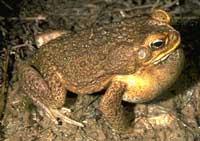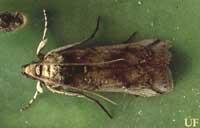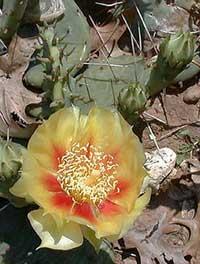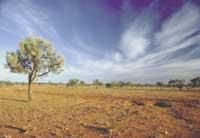If everyone stays in their place of origin...

Two
major floods to the detriment of Australian fauna and flora were made in 1925 and 1935. In 1925 an insect was introduced to stop the invasion of the so-called Opuntia humifosa cactus and in 1935 sugar cane was eaten against beetles, South American toad. The first, to the detriment of one plant, and the second, to the detriment of the fauna; one of them caused rapid consequences, the other had to wait 60 years to swim, but the two species entered the Queensland region and both have caused the loss of ecological balance.
Farmers looking for solutions
It is not easy to say what solution must be taken to face the problems that prevent production in an agrarian region. The fact is that peasants have many problems and although the attitude against pesticides and herbicides is clear, they are often not offered another solution. However, in Australia, there have been several inventories of how to deal with provisional problems, although they have not measured well the short-term and long-term consequences of their action.

For
example, by 1925, especially in the Queensland area, the peasants faced the Opuntia humifosa cactus. In this region there were 24 million hectares of cacti that could not be cultivated and dedicated to agriculture. Therefore, from Argentina, 2,750 eggs were taken from the insect Cactoblastis cactorum to stop the invasion. In this case nature worked very soon and in a year it was estimated that there were 2.5 million eggs and 2.25 million insects. In 1930 the massive elimination of cacti was evident. At present, this species of cactus looks very little and this insect has spread without measure.
This is not the only species that has entered Australia, much less. In 1935, faced with the high number of beetles that threatened the production of sugar cane, the producers expressed their intention to act. To do this, they came up with toads from South America (Bufo marinus), which at the time had no chemicals. Think and do. South American toads were introduced in the Queensland region, until then strange. In this case, nature and man have shown two different rhythms. And the species introduced 65 years ago, with good intention and inactivity, is spreading to a vertigo speed. According to experts, this species of toad is gaining 30 kilometers each year to the center and northeast of Australia and, for the moment, although they have had some ideas, they do not find a suitable solution.
No suitable solutions

It has
been seen that the use of pesticides and herbicides to protect farmers' productions will not be the most appropriate solution, but neither the transfer of species from one place to another can be a way to avoid new invasions that may arise.
In the
large Australian plains, the Cactoblastis cactorum finds no obstacle and now the cactus problem has become an insect problem. They have tried to find the appropriate pesticide to kill the insect, but it is not advisable to abuse the pesticides, since it can pose a danger to the fauna.
On the
other hand, regarding the invasion of the toad of South America, it was thought to introduce first a new species to the detriment of the toad. Although the idea is good, there is a serious problem: these toads have a dangerous poison that kills the predator in fifteen minutes. In addition, like the toad, its eggs and tadpoles are poisonous. Therefore, in addition to large crocodiles and predators, there is a risk that fish and birds may die in important quantities. This poison is very effective and the toad takes advantage to kill its prey after hunting.

Therefore,
scientists at the Australian Center for Scientific and Technological Research put their hopes on a virus. This virus affects nicknames near Caracas. His intention was to take him to Australia, as they took him 60 years ago. However, to avoid making another mistake, they went to Caracas and conducted strict investigations. Then they realized that the virus would not only affect the toad of South America, but also the rest of the Australian population. Currently, researchers at the University of Adelaide are working on another project to address the invasion of Caribes, Hawaii, the Philippines, Papua, New Guinea and other Pacific reflexes. At the moment, there is no solution to curb the extension of the toads, but, however, to protect Kakadu National Park, the Aborigines have proposed to build a blacksmithing that covers the entire environment. Experts believe that it is not a suitable solution since ten kilometers of iron would not prevent the entry of toads in the natural park.
As
you can see, moving species back and forth can be as dangerous as chemical contamination. Australia has been witness on more than one occasion of the ecological imbalance, but also in our environment they have caused such catastrophes. From now on, therefore, it was a matter of trips in which the exotic animal is brought!
Unlimited plains in Australia

Australia is the smallest continent in the world (7.6 million km2), but still has many treasures for biologists. Only 18.3 million inhabitants live there and it is not surprising that the climate is very arid. Among the eleven deserts in Australia they occupy 20% of their surface. As for the relief, it is the continent with the lowest average altitude, being Koscius the highest mountain (2,228 m). The most visible landscape is the vast and ancient plain, so new animals that penetrate Australia, if adapted to their climate, do not present greater obstacles to their expansion.
The
climate is arid but in Australia you can see landscapes as diverse as stone deserts, west and central spoonfuls and eastern coastal prairies.
Being a continent with diversity of
fauna and flora, 58 million hectares are protected areas. These include national parks, reserves, conservation parks and environmental protection parks. It is essential the existence of this type of protected spaces, since in addition to having a varied fauna and flora, it is very old. For example, 13 of the 19 oldest plant families in the world can be found in the Queesland region.
Published in the supplement Natura de Gara
Buletina
Bidali zure helbide elektronikoa eta jaso asteroko buletina zure sarrera-ontzian











